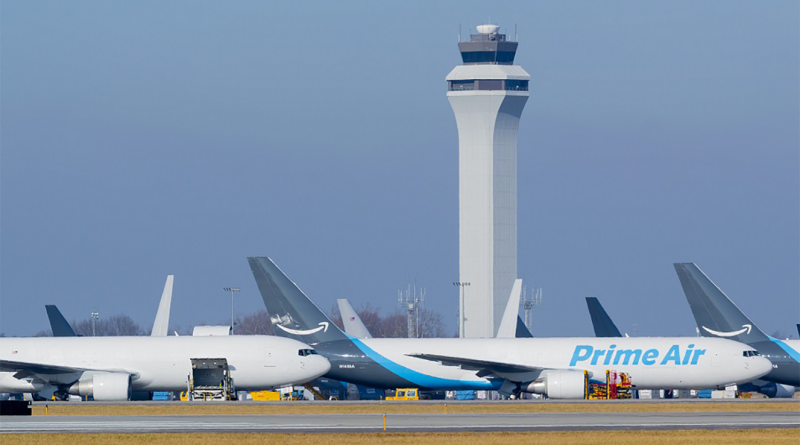Amazon Air Cargo’s Bold Move into Open-Market Airfreight Services
Amazon Air Cargo recently signaled a new chapter in its logistics journey, unveiling plans to openly offer its airfreight capacity to third-party clients. This announcement, made by Amazon Air Cargo’s Global Director, Tom Bradley, at the recent International Air Cargo Association (TIACA) Air Cargo Forum in Miami, underscores the company’s desire to become a prominent player in the air freight market. While Amazon has quietly offered cargo space to third parties in recent years, Bradley’s statement that Amazon is ‘ready to shout’ about this service signals a shift toward a more public and strategic approach.
The move is significant, as Amazon Air’s network—now comprising around 100 aircraft—spans major regions like the United States, Europe, and India. Bradley emphasized that Amazon is ready to expand further, with new markets and regions on the radar as the company evaluates its growth potential.
Amazon Air Cargo’s expansion strategy and network
Amazon Air Cargo’s strategy of opening its services to third-party clients relies heavily on its existing infrastructure, a network designed with both density and flexibility. This network has been built around Amazon’s core mission: to offer fast, reliable delivery solutions that meet high customer expectations. Currently, the fleet comprises approximately 100 aircraft operating across a robust air and ground network in the US, Europe, and India.
Expansion is a priority for Amazon Air in 2024, with plans to assess new regions and countries to add to its network. Amazon’s approach combines air and ground logistics, with the capability to move goods through various modes and adapt routes in real-time. By integrating advanced technology into its operations, Amazon Air ensures its cargo services remain flexible and dependable, benefiting from the same real-time tracking and adaptive logistics tools that support Amazon’s e-commerce operations.
The customer-centric approach to air cargo services
Amazon Air Cargo’s strategy goes beyond mere infrastructure; it’s rooted in a customer-centric philosophy that aligns with the company’s long-standing focus on service excellence. Bradley highlighted that, despite its own extensive parcel volumes, Amazon prioritizes flexibility and service reliability, ensuring that it can accommodate both Amazon packages and third-party shipments without compromising on delivery standards.
A core element of this approach is the use of real-time technology to manage capacity. Amazon Air Cargo’s system allows for dynamic adjustments to meet fluctuating demand, ensuring that third-party shipments receive the same attention and reliability as Amazon’s own. Bradley pointed out that, because of its operational density, Amazon rarely faces situations where it must choose between fulfilling an Amazon order or an external shipment.
Competing with industry giants
Amazon Air Cargo’s entry into the third-party logistics market places it in direct competition with established industry giants like FedEx, UPS, and DHL. However, Amazon brings a unique set of advantages, combining scale, technology, and a strategic focus on end-to-end logistics that differentiates it from traditional air cargo providers. With its extensive network of aircraft, ground vehicles, and fulfillment centers, Amazon has created a seamless logistics ecosystem capable of handling both internal and external shipments efficiently.
A major aspect of Amazon’s unique appeal lies in its integration of air and ground logistics through a single, cohesive network. This enables Amazon to control every stage of the shipping process, unlike traditional air carriers that often rely on partnerships or third-party services for ground logistics.
For clients, this integrated approach translates into reduced handovers, fewer delays, and a streamlined service. Furthermore, Amazon’s continuous investment in logistics technology—such as real-time tracking, adaptive capacity management, and automated decision-making—ensures that clients receive a level of service typically associated with e-commerce giants rather than traditional air freight providers.
Future outlook for Amazon Air Cargo and the air freight market
Amazon’s plans to expand its air cargo services to third-party clients in 2024 signal not only a pivotal moment for the company but also an important shift for the broader air freight industry. With Amazon’s established air network and a robust ground infrastructure supporting it, the company is well-equipped to meet the rising demand for reliable and rapid shipping solutions. According to industry data, global air cargo demand has seen sustained growth, spurred by an increase in e-commerce and international trade.
Looking to the future, Amazon Air Cargo’s growth strategy includes ongoing exploration of new markets, increased fleet capabilities, and further development of its integrated logistics services. As the company evaluates opportunities in emerging markets, the flexibility and adaptability of its network will be critical to expanding its footprint.
The move into third-party logistics services by Amazon is emblematic of a larger trend in the industry, where e-commerce and tech-driven companies are leveraging their infrastructure to offer comprehensive logistics solutions.
Sources
